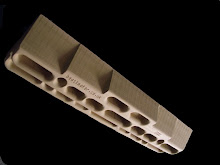Northumberland is without a doubt my favourite place to boulder in the country, It embodies nearly all the reasons why I like bouldering outdoors so much, with striking lines beautiful scenery, skin friendly holds which tease the layers off gradually with each failed attempt rather than ripping away big chunks all at once. The weathering of the features produces some incredible formations too. I've been revisiting queens this last week, trying to mop up the last of the lines I want to do which'd burn a hole in my mind if I sat back in sheffield leaving them undone. Of all of these the Crackline on the main crag at Queens stood as the last of the big 4, It is also by far the biggest at just over 8m. It is a fantastic feature, a meandering crackline flows down from the top of the crag before completely disappearing at about 4m, leading up from the ground is another crackline and a micro break stopping at about 2.5m in the void is a 1/4 pad sidepull, and it looks at you like it is being generous for leaving you anything, basically the problem comes down to using this sidepull and putting your foot in your armpit on the micro break and rocking it out until you can jam your thumb in the bottom of the crack, the climbing after this is still hard, but compared to a 1move 7c+, it is alot more do able. This would have been a hard trad route years ago, especially if it was housed in a trad crag of other E numbers. But i'm claiming this one for the boulderers. "the Crack in the shadows" highball font 8a to ground up I imagine and a good representation of the height standards can be pushed to. Unfortunately I had to clean it on abseil or it would have still been unclimbably scrittly as much of Queens lies dormant in this state, but I kept working it to a minimum on the ab rope. Queens now has one of the best wall problems (it doesn't climb like a crack as there isn't a proper jam on it) in the UK, as well as arete, prow, groove (how soon is now), and lunge (slot). Which isn't bad for something so small in length.
The Pic shows the arete of glorius which climbs up on the LHS of it in its entirety from its base, which arguably supercedes a fine (glorius) E5 from last year which climbs the E2 gloria on the right arete on the right for 1/2 and uses gear on this before turning the arete to finish. On the left all the way it is a magnificent new school 8m high font 7a+ highball (it's protectionless anyway) The crack in the shadows is takes the centre of the shady wall to its left all the way, this pic doesn't even approach doing it justice but should help to place it

I also climbed a nice new 7bish thing out the roof near the wall staying on undercuts the whole way until a pinch is reached on the lip where you come into a flat undercut and lunge round to a nice edge
In other news, Cumbria's fastest fisherman, mr Bullit, nabbed an ascent of queen kong whilst it wasn't looking. Immediately he questioned the grade (Rob only ever lets himself climb 7b+), it certainly is a lot cleaner these days and could quite easily be 7c+ (I think it is). It seems pretty hard to regrade anything these days without getting branded a willy waving sandbagger or spoilsport etc. The fact is that the problem is about 75% cleaner than it was 5 years ago when i first did it, and it was originally done with double toe hooks by me and chris where as nowadays heel hooks on the crux make it a lot higher percentage, new beta (if it makes a difference) should always lead to a new grade otherwise there is no point in grading something for the easiest sequence, bradpitt is the textbook example of this, if someone did it with a heel first and gave it 7b+ it'd be a completely different problem historically.


<< Home